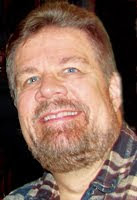She burst onto the scene in the 1980s as President Reagan’s speechwriter. She sculpted a practice still fashionable major Presidential addresses – notably the State of the Union. Noonan would script Reagan to acknowledge some ordinary citizen in the gallery, having thematically woven that person’s special experience or even some heroic contribution into the text of the speech.
Noonan also is responsible for probably the third-most-famous passage penned (in my lifetime, at least) by a Presidential speechwriter. It concluded Reagan’s tribute to brave astronauts in the wake of the catastrophic 1986 Challenger explosion:
The crew of the space shuttle Challenger honored us by the manner in which they lived their lives. We will never forget them, nor the last time we saw them, this morning, as they prepared for their journey and waved goodbye and “slipped the surly bonds of earth” to “touch the face of God.”
(The most famous? John Kennedy: “Ask not what your country can do for you … ask what you can do for your country.” Second? Reagan again: “Mr. Gorbachev – Tear down this wall!”)
Now, it should be noted that Noonan’s script was adapted from the words of British aviator John Magee, who was killed at the age of 19, shortly after writing this now world-famous poem. No great writing is truly original; to one extent or another, writers draw on the works and experiences of others.
In the end, the genius of the speechwriter is in writing to the ear. Would “four-score and seven years ago” have ever escaped the blue pen of a newspaper’s city editor? Without the speechwriter’s craft, December 7th, 1941 would simply have been “a date which will live in world history” (as it was in the first draft) – wholly lacking in rhythm, tone and urgency.
But now, the date forever is associated with FDR’s unique elocution as “a date which will live in infamy.” Who, before or since, has ever used the word “infamy” with any effect whatsoever? (and, for that matter, how many speechwriters might have taken the risk, with a lesser orator, to back up the words “in” and “infamy” on the page?)
Superior speechwriting invokes rhythm. Its syntax consists of “Terse and Verse” … weaving short bursts of energy and content among a prosaic lullabye of calming poetry. Speechwriting involves carefully plotted repetition, always scouting for words or concepts that might not be immediately clear to the ear.
Consider a simple example – F. Scott Fitzgerald’s introduction of Daisy in The Great Gatsby. On the written page, it went like this:
Daisy, made an attempt to rise--she leaned slightly forward with a conscientious expression – then she laughed, an absurd, charming little laugh, and I laughed too and came forward into the room. "I'm p-paralyzed with happiness." She laughed again, as if she said something very witty, and held my hand for a moment, looking up into my face, promising that there was no one in the world she so much wanted to see. That was a way she had. She hinted in a murmur that the surname of the balancing girl was Baker. (I've heard it said that Daisy's murmur was only to make people lean toward her; an irrelevant criticism that made it no less charming.)
Suppose that was to be the passage of a speech. It might be re-written like this:
When I first met Daisy, she told me she was paralyzed with happiness. “P-paralyzed” she said. Laughing. Charming. She started to rise, then leaned forward, holding my hand and looking at me with eyes that promised I was the one man in the world she wanted to see. That was her way. Her charm. The balancing girl’s name was Baker, she said. Said? No. No, she murmured. Murmured in a low, intimate voice that made people lean toward her.
Notice the mechanics:
- First, the use of the inadvertent stutter to repeat and emphasize the word “paralyzed.”
- A wholly ordinary sentence of moderate length followed by a three-word burst and two one-word punctuations.
- Then, a lilting 30-word sentence featuring short, common words – easy to spit out in a single breath – but with a splash of character and content – offering the speaker ample latitude to employ a bit of charm or showmanship with the line.
- Three terse sentences, then four (three shorts and a long fragment, actually) crafted to explain the important word “murmur” – a word that is hard to enunciate clearly, and one that many people might not be able to define or recognize out of context.
Ever wonder what goes on inside a Writer’s head? Well, fortunately, much of the nitty-gritty passes in a flash – judged by experience against the exigencies of the moment – without much thought to the specifics of craft. The rules have long since been learned, memorized and broken (often … and typically with little consideration devoted to the act).
Next: Back to Basics (Part 6) – Read!
[For personal writing assistance, go to www.fixadocument.com]

No comments:
Post a Comment